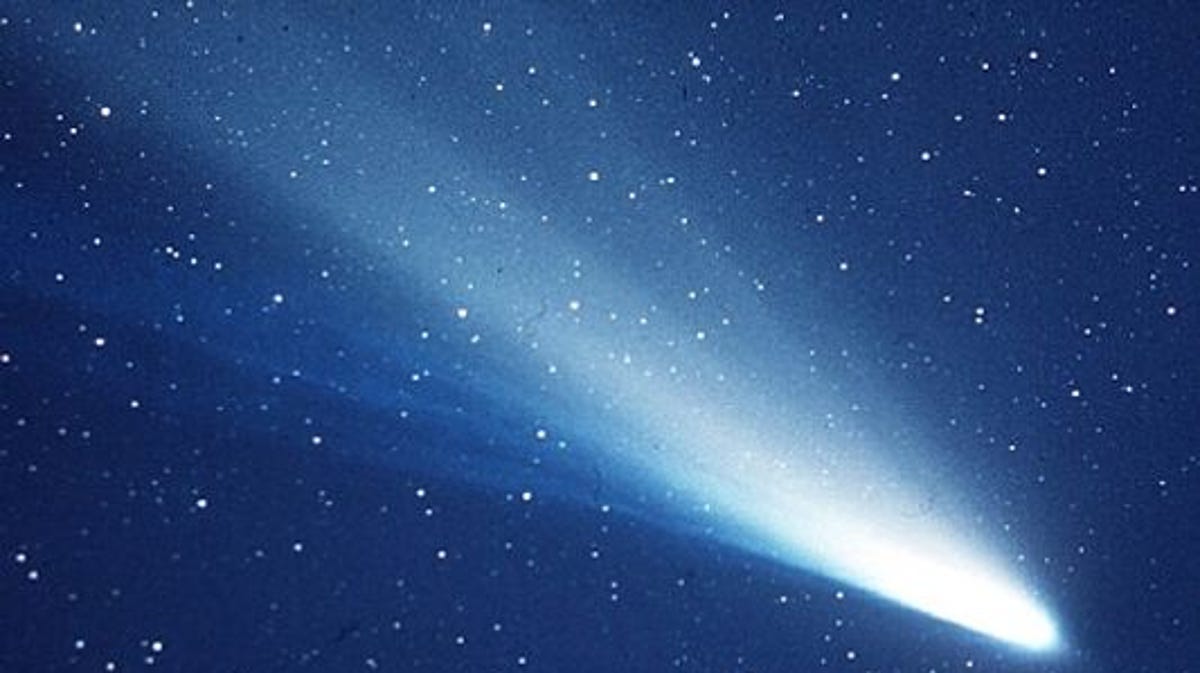In a rare double cosmic treat and once-in-a-lifetime opportunity, stargazers can look to the night sky for two rare comets through October 2025 — and Comet Lemmon and Comet SWAN are visible starting tonight, Oct. 20, 2025, just in time for the peak of the Orionid meteor shower.
Tonight’s visible comets make a rare approach close to Earth and both will peak in brightness between Oct. 20 and Oct. 21. The bright green Comet Lemmon (C/2025 A6) will pass by Earth within 56 million miles, while Comet Swan (C/2025 R2) will come even closer to Earth, at roughly 24 million miles, according to Space.com.
The weather in New Jersey should be generally clear tonight and into tomorrow morning, according to the National Weather Service. NOAA forecasts clouds and showers should dwindle before tonight’s sunset in New Jersey, and thanks to gusty winds, lingering moisture and threats of fog will dissipate.
Here’s what to know about the two rare comets, how to spot them, timing, and more.
What comet is visible tonight?
Comet Lemmon, named C/2025 A6 Lemmon, and Comet SWAN, named C/2025 R2 Swan, are expected to shine bright tonight, Oct. 20, and Tuesday, Oct. 21, 2025. However, Lemmon’s spookiest approach will come around Halloween 2025, when it could shine its brightest around Oct. 31-Nov. 2, according to Starwalk.
Lemmon has reached a magnitude +6 on the detection limit of the human eye, which technically means it could be seen without a telescope or binoculars, if the sky is perfectly dark. Lemmon was first discovered in January 2025 by the Mount Lemmon Survey, which uses a 60-inch telescope at Mt. Lemmon, Arizona.
Comet SWAN was first discovered in September 2025 by the Solar and Heliospheric Observatory’s SWAN instrument.
When is Comet C/2025 A6 Lemmon visible?
Comet Lemmon is inbound and is making a close approach Oct. 21, 2025 (the new moon) but will brighten even more near Halloween 2025 and through early November. NASA says while it’s tough to predict the brightness of comets, estimates say Lemmon will be best seen in the evening sky near bright stars like Arcturus in Boötes by looking northwest after sunset.
To spot it, first find when the sun sets at your location. Then, head out about 90 minutes after with a pair of binoculars or a telescope, and look toward the northwest. You’ll notice each night it’ll be making a climb northward.
The next time Comet Lemmon will make its closest approach is in about 1,150 years, so don’t wait!
When is Comet C/2025 R2 Swan visible?
Comet SWAN, or C/2025 R2 Swan, is also visible in the evening sky, but in the southwest. SWAN is slightly dimmer, although recent observations put it on a brightness magnitude of 5.6, meaning it may be visible to the naked eye as very faint object in the dark night sky.
SWAN is best position for observers in the Southern Hemisphere, so it might be trickier to spot than Lemmon. On Oct. 16, SWAN was positioned about 5 degrees to the upper left of the star Xi Serpentis, in the eastern section of the constellation Serpens.
To spot it, look in the hours following sunset, before it sinks low on the south-southwest horizon. Use a stargazing app, like Stellarium, to find the comet.
Where to look, how to see the comets?
Beginning tonight, Oct. 20, skywatchers will want to find a spot with a good view of the horizon, away from city lights. Unlike stars and planets, comets often have diffuse comas and long, faint tails that can span a significant portion of the sky. For that reason, using lower magnification on your equipment works best.
When will Halley’s Comet appear next?
All this comet talk has stirred interest in Halley’s Comet, the most famous of all comets that appears twice in a human lifetime. Halley’s Comet is expected to appear again around July 28, 2061, according to Space.com. Right now, Comet 1P/Halley is in the constellation of Hydra, known as the “female water snake” constellation close to the celestial equator.
When did Halley’s Comet last appear?
Halley’s Comet last appeared February 1986, although it was the worst possible viewing circumstances for Earth observers being that it was out of sight and on the opposite side of the midwinter sun. However, midsummer 2061 promises a much better view — at least 10 times brighter, Space.com says.
Lori Comstock is a New Jersey-based journalist with the Mid-Atlantic Connect Team.

